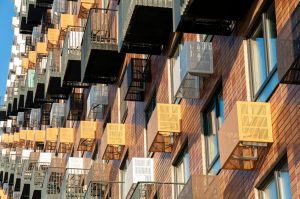Urban Revitalization Projects Transforming Downtowns
Urban revitalization projects have become increasingly popular in recent years as cities strive to transform their downtown areas into thriving hubs of economic and cultural activity. These projects involve the redevelopment and improvement of existing urban spaces, often through a combination of public and private initiatives. While the specific goals and strategies of each project may vary, the ultimate aim is the same: to revitalize and revamp downtown areas in order to create a more vibrant, sustainable, and attractive urban environment for residents and visitors alike.
The Benefits of Urban Revitalization Projects
The benefits of urban revitalization projects are numerous and wide-ranging. As populations continue to grow and expand, many cities are facing the challenge of outdated and underutilized downtown areas. Neglected buildings, vacant lots, and abandoned properties can not only contribute to a sense of blight within a city, but they can also hinder economic growth and urban development. By investing in urban revitalization projects, cities can transform these neglected spaces into assets that contribute to a healthier, more livable, and more prosperous community.
Attracting Businesses and Creating Jobs
One of the primary aims of urban revitalization projects is to attract businesses and create jobs. By revitalizing downtown areas, cities can create a more desirable location for businesses to set up shop. This can lead to increased economic activity, job growth, and ultimately, a boost to the local economy. When businesses thrive in a downtown area, they not only provide employment opportunities, but they also contribute to a bustling, energetic urban environment that attracts more businesses, residents, and visitors.
Improving Urban Aesthetics
Urban revitalization also seeks to improve the aesthetics of downtown areas. Neglected and dilapidated buildings can be revitalized, repaired, and repurposed, while vacant lots and abandoned properties can be transformed into attractive public spaces, such as parks and plazas. By beautifying and enhancing the visual appeal of downtown areas, urban revitalization projects can make these areas more inviting and attractive to residents and visitors alike.
Encouraging Sustainable Development
Many urban revitalization projects prioritize sustainability and environmentally-conscious development. This can involve the use of renewable energy sources, green building materials, and the implementation of sustainable practices in the design and construction process. By incorporating sustainable strategies into their projects, cities can not only reduce their environmental impact but also save money in the long run through reduced energy and maintenance costs.
Examples of Successful Urban Revitalization Projects
There are numerous examples of successful urban revitalization projects that have transformed downtown areas into thriving hubs of economic, social, and cultural activity. One such example is the High Line in New York City. What was once an abandoned elevated railway line is now a popular public park that attracts millions of visitors each year, contributing to the revitalization of the surrounding neighborhoods.
The Liverpool One project in the UK is another successful urban revitalization project that has transformed the city’s downtown area. The project involved the redevelopment of 42 acres of land, creating a new pedestrian-friendly shopping district with green spaces, office buildings, and residential apartments. The project has been hailed as a great success, attracting new businesses and residents to the city and boosting the local economy.
Conclusion
In conclusion, urban revitalization projects play a crucial role in transforming downtowns into vibrant, thriving, and sustainable urban centers. By attracting businesses, creating jobs, improving the aesthetics of the city, and promoting sustainable development, these projects contribute to the overall economic and social well-being of a community. As cities continue to grow and evolve, the need for urban revitalization will only become more pressing, and investing in these projects will be essential for creating healthier, more livable, and prosperous urban environments for generations to come.










